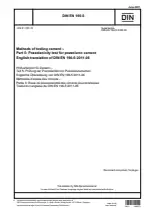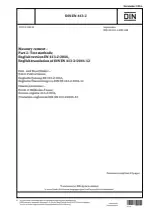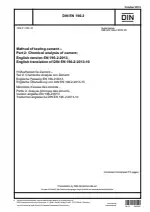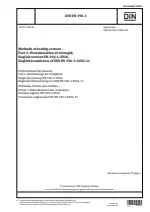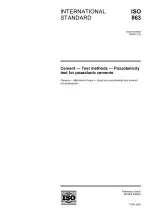Methods of testing cement - Part 5: Pozzolanicity test for pozzolanic cement
Also Known As:
The DIN EN 196-5 standard is a European standard that specifies the procedure for measuring the pozzolanicity of pozzolanic cements. This standard only applies to pozzolanic cements that conform to the EN 197-1 standard and does not include Portland pozzolana cements or pozzolanas.
The standard establishes a reference method for assessing the pozzolanicity of pozzolanic cements. Pozzolanicity refers to the ability of a material to react with calcium hydroxide in the presence of water to form cementitious compounds. This reaction contributes to the strength and durability of the cement.
By providing a standardized test procedure, this standard ensures consistency and comparability of results for evaluating the pozzolanicity of pozzolanic cements. It helps manufacturers, researchers, and regulatory bodies in assessing the performance of these cements and determining their suitability for specific applications.
| Descriptors | Alkalinity, Binding agents, Building lime, Calcium hydroxides, Calcium ions concentration, Calcium oxide, Cements, Chemical analysis and testing, Construction, Construction materials, Determination of content, EDTA, Indicators, Laboratory testing, Pozzolanic cement, Pozzolanicity, Reagent solutions, Reference methods, Specification (approval), Specimen preparation, Test equipment, Testing, Sample preparation |
| ICS Codes | 91.100.10 - Cement. Gypsum. Lime. Mortar |
| Language(s) | English |
| File Size | 532.5 KB |

